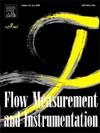Eroded orifice flow characteristics and bionic anti-erosion of a hydraulic servo spool valve
IF 2.3
3区 工程技术
Q2 ENGINEERING, MECHANICAL
引用次数: 0
Abstract
Solid particle contaminants in hydraulic oil can erode the orifices of servo spool valves, degrading their microstructure and altering their flow characteristics. To investigate this phenomenon, a computational fluid dynamics surface model was developed to simulate the effects of erosion, and its accuracy was validated through static characteristic tests. This study analyzed the flow behavior of eroded orifices and introduced a bionic anti-erosion design inspired by the structure of a desert scorpion's back. Results showed that erosion increased oil flow velocity and the incidence angle at small openings, causing the primary flow to shift away from the spool edge. In addition, the direction angle of the pressure gradient increased, resulting in the formation of a low-pressure region within the valve sleeve and complicating particle trajectories, particularly near the P→A orifice. The bionic convex structure promoted mainstream offset and micro-vortex effects, which effectively reduced erosion. Notably, under optimal parameters (R = 30, C = 5), the average erosion rates of the spool and sleeve were reduced by 43 % and 21 %, respectively. This study offers a novel approach for enhancing the durability of hydraulic valves.
液压伺服滑阀冲蚀孔流特性及仿生抗冲蚀性能研究
液压油中的固体颗粒污染物会腐蚀伺服滑阀的节流孔,使其微结构退化并改变其流量特性。为了研究这一现象,建立了计算流体力学表面模型来模拟侵蚀的影响,并通过静态特性试验验证了其准确性。本研究分析了侵蚀孔的流动行为,并引入了一种受沙漠蝎子背部结构启发的仿生抗侵蚀设计。结果表明:冲蚀增大了小开口处的油流速度和入射角,导致初级流向阀芯边缘偏移;此外,压力梯度的方向角增大,导致阀套内低压区形成,颗粒轨迹复杂化,特别是在P→a孔附近。仿生凸结构促进了主流偏移效应和微涡效应,有效地减少了侵蚀。值得注意的是,在最佳参数(R = 30, C = 5)下,阀芯和套筒的平均侵蚀率分别降低了43%和21%。该研究为提高液压阀的耐久性提供了一种新的途径。
本文章由计算机程序翻译,如有差异,请以英文原文为准。
求助全文
约1分钟内获得全文
求助全文
来源期刊

Flow Measurement and Instrumentation
工程技术-工程:机械
CiteScore
4.30
自引率
13.60%
发文量
123
审稿时长
6 months
期刊介绍:
Flow Measurement and Instrumentation is dedicated to disseminating the latest research results on all aspects of flow measurement, in both closed conduits and open channels. The design of flow measurement systems involves a wide variety of multidisciplinary activities including modelling the flow sensor, the fluid flow and the sensor/fluid interactions through the use of computation techniques; the development of advanced transducer systems and their associated signal processing and the laboratory and field assessment of the overall system under ideal and disturbed conditions.
FMI is the essential forum for critical information exchange, and contributions are particularly encouraged in the following areas of interest:
Modelling: the application of mathematical and computational modelling to the interaction of fluid dynamics with flowmeters, including flowmeter behaviour, improved flowmeter design and installation problems. Application of CAD/CAE techniques to flowmeter modelling are eligible.
Design and development: the detailed design of the flowmeter head and/or signal processing aspects of novel flowmeters. Emphasis is given to papers identifying new sensor configurations, multisensor flow measurement systems, non-intrusive flow metering techniques and the application of microelectronic techniques in smart or intelligent systems.
Calibration techniques: including descriptions of new or existing calibration facilities and techniques, calibration data from different flowmeter types, and calibration intercomparison data from different laboratories.
Installation effect data: dealing with the effects of non-ideal flow conditions on flowmeters. Papers combining a theoretical understanding of flowmeter behaviour with experimental work are particularly welcome.
 求助内容:
求助内容: 应助结果提醒方式:
应助结果提醒方式:


